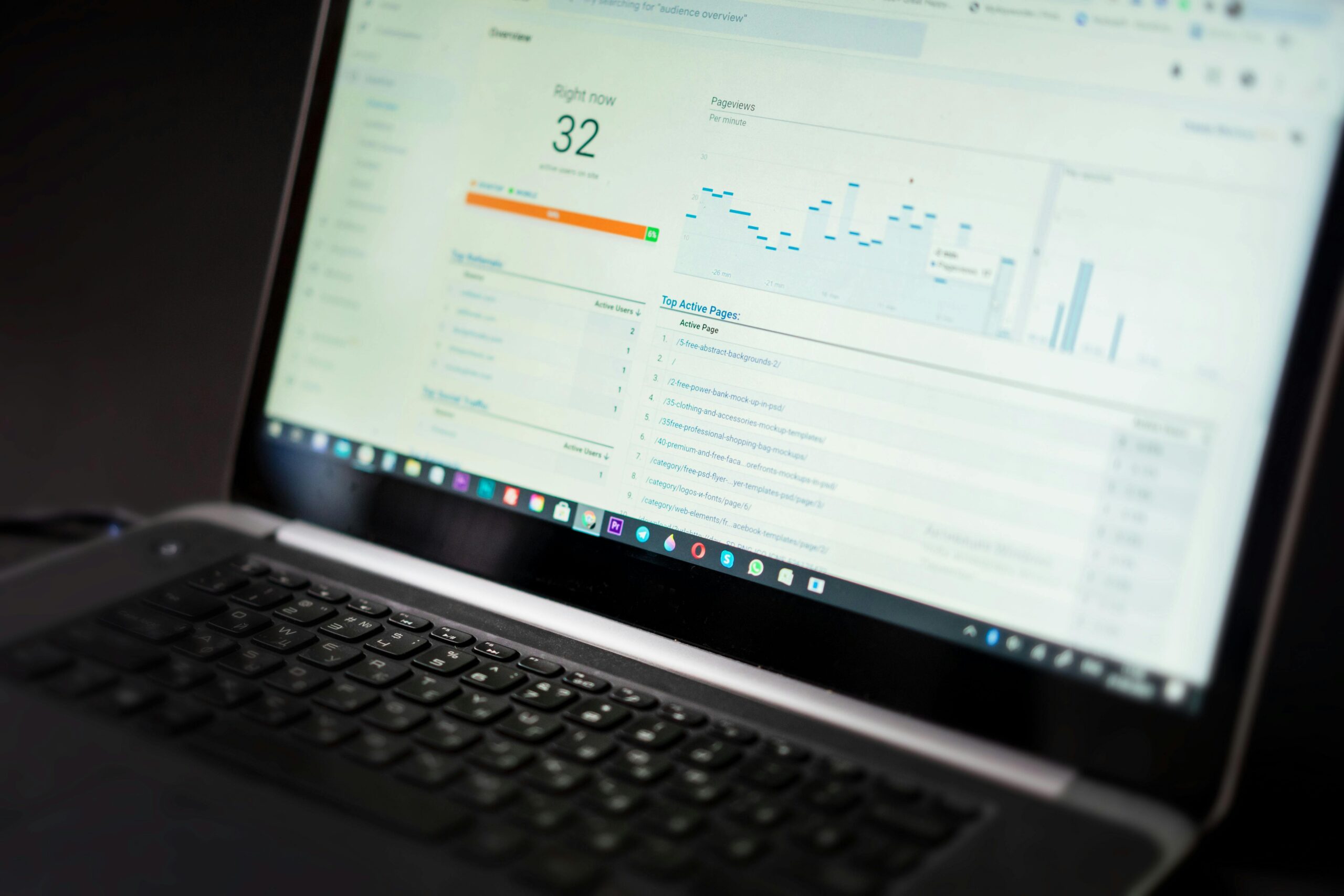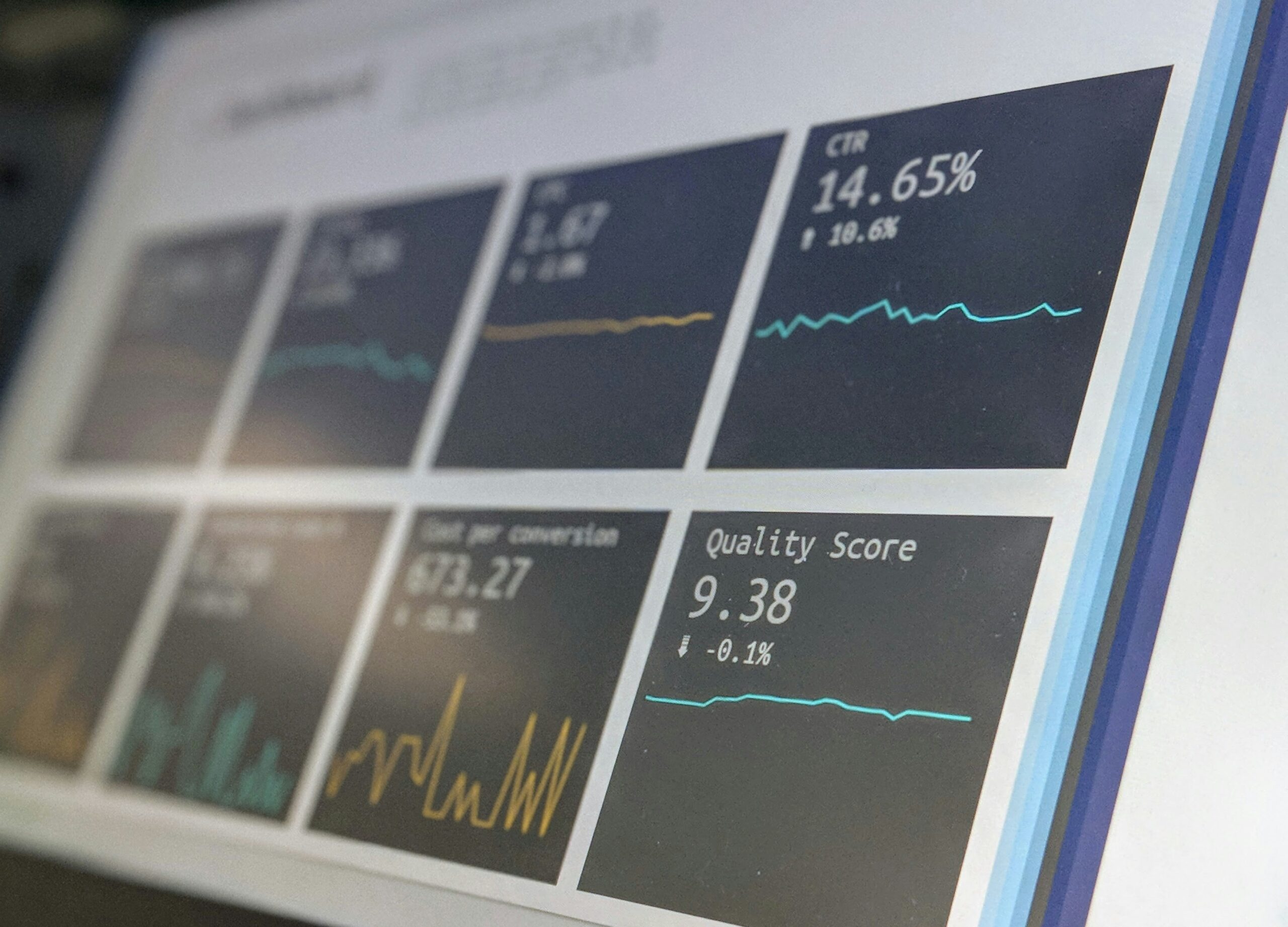Website traffic metrics provide valuable insight into the performance of your online presence. Understanding these metrics allows businesses to assess their marketing strategies’ efficacy, identify improvement areas, and make data-driven decisions. This document will delve into the key website traffic metrics, guiding you in comprehending their implications and effectively utilizing this knowledge to enhance your website’s performance.
Why Do Businesses Overlook Crucial Website Traffic KPIs?
- Lack of Understanding: More than half of businesses struggle to discern which website traffic metrics are essential and how they align with the company’s objectives. This uncertainty leads to the neglect of crucial data.
- Absence of Clarity on Benchmarks: Businesses struggle to gauge their performance effectively without clear benchmarks. This lack of context contributes to the underutilization of key metrics.
- Complexity of Traffic Metrics: The intricate nature of web traffic metrics and the absence of straightforward guides can deter many from correctly using these invaluable insights.
Addressing these issues can allow businesses to leverage key website metrics to unlock valuable marketing insights and significantly enhance their online presence.

The Importance Of Key Website Traffic Metrics
Understanding key website traffic metrics is essential for any business aiming to optimize its online presence. These metrics offer a wealth of data to inform decision-making and guide strategy. In the following sections, we will delve into the importance of various key metrics, providing a comprehensive understanding of their significance in measuring website performance.
How Key Website Traffic Metrics Increase Revenue
Key website traffic metrics serve as a roadmap, directing businesses toward increased revenue generation. Businesses can focus their optimization efforts on improving conversion rates by identifying high-potential landing pages through these metrics. These metrics also act as a diagnostic tool, enabling businesses to spot declines in conversion rates and troubleshoot issues promptly, preventing potential losses.
The analysis of visitor value with key metrics offers critical insights that can guide budget allocations in marketing, ensuring resources are directed towards avenues that offer the highest return on investment. This optimal utilization of resources further bolsters revenue growth. Thus, understanding and leveraging key website traffic metrics can significantly impact a company’s bottom line.
How Key Website Traffic Metrics Lower Costs
Key website traffic metrics significantly contribute to cost reduction, ultimately enhancing profitability. Businesses can reallocate resources towards more profitable avenues by identifying channels with low ROI and high conversion costs, thus optimizing marketing expenditures. Additionally, these metrics can guide resource allocation for technical aspects, such as web hosting and content delivery networks (CDNs), ensuring smooth website operations without unnecessary financial strain. One of the most crucial metrics – bounce rate – can guide businesses in conducting A/B tests for their homepage.
These tests can help identify and implement elements that retain visitors, reduce bounce rates, and lower costs associated with customer acquisition.
Improving Customer Experience With Key Website Traffic Metrics
Website traffic metrics play a pivotal role in enhancing customer experience on your site. High exit page data, for example, can help pinpoint areas where the user journey may be confusing or lacking, allowing for targeted improvements. Additionally, these metrics allow for measuring micro-conversions, which are crucial markers on a customer’s journey through your sales funnel. By monitoring these, businesses can streamline the user journey, making navigation effortless and encouraging higher conversion rates.
Demographic data provided by website traffic metrics can be a powerful tool for personalizing site content. Tailoring content to your audience can significantly improve engagement rates, leading to increased customer satisfaction and, ultimately, higher conversion rates. By leveraging these metrics, businesses can drastically enhance their customer’s online experience, fostering greater brand loyalty and driving growth.

Key Website Traffic Metrics That You Should Monitor
Let’s examine some of the most critical website traffic metrics that businesses should monitor. These metrics include the number of unique visitors, page views, session duration, traffic sources, and bounce rate. Understanding these metrics and their significance will empower businesses to optimize their websites effectively, attract targeted traffic, and improve conversion rates.
The Importance Of Session Metrics On A Website
A session, defined as 30 minutes of non-continuous activity on a website, is a key metric that provides valuable insights into user behavior. It tells you about the duration and quality of engagement, helping you understand whether your content captures and maintains user interest.
Another crucial component of session metrics is the pages per session rate. A healthy rate is generally considered to be 2+. That indicates that users are not just landing on your site but also exploring additional pages, suggesting that your content is compelling enough to keep them engaged.
Analyzing session patterns regarding weekdays versus weekends may unveil key user behavior trends. It helps identify peak traffic periods, which can guide you in scheduling content releases or promotional campaigns for maximum impact. This understanding of session metrics can significantly enhance user engagement and overall website performance.
The Role Of User Metrics In Website Traffic Analysis
User metrics are an essential barometer of website performance, providing granular insights into visitor behavior. A key aspect to consider is the ratio of new users (60-80%) to returning users. This balance provides insights into your website’s reach (new users) and the loyalty of your audience (returning users).
Analyzing data related to language, location, and the device used can provide valuable context about your audience, enabling you to tailor content and design elements to specific user groups, thereby enhancing engagement levels.
Tracking a visitor’s clickstream from entry to exit is a powerful tool for understanding user behavior. This data can reveal the most common paths through your site, highlight areas of friction or confusion, and identify the content that resonates most with your audience. This granular level of detail user metrics offers empowers businesses to craft a more targeted, user-centric website experience.
The Significance Of Pageview Metrics For Website Traffic
Pageview metrics are fundamental to website traffic analysis and offer valuable insights into user behavior patterns. By understanding the performance of landing, category, or blog pages, businesses are better equipped to modify or enhance content, improving engagement and boosting conversion rates. Key metrics such as high exit and bounce rates can act as early warning signals, identifying pages or content that may drive users away from your site.
Mind Your Business Newsletter
Business news shouldn’t put you to sleep. Each week, we deliver the stories you actually need to know—served with a fresh, lively twist that keeps you on your toes. Stay informed, stay relevant, and see how industry insights can propel your bottom line.
Subscribe to Mind Your Business
These metrics can guide user experience improvements and content adjustments to decrease bounce rates and increase session duration. Spotting funnel fallout rates can uncover potential workflow bugs or user journey roadblocks. Analyzing these website traffic metrics allows you to optimize your webpage to create a seamless, user-friendly site that encourages visitor engagement and drives conversions.

How To Use Key Website Traffic Metrics For Your Goals
To make the most of the available website traffic metrics, one must accurately interpret and strategically implement actions based on them. This requires an understanding of their relevance to specific business goals. Let’s examine how these key website traffic metrics can support goals such as driving growth, improving website performance, and enhancing user engagement.
E-Commerce Sites And Key Website Traffic Metrics
In the context of eCommerce sites, key website traffic metrics can offer substantial insights that aid in increasing Average Order Value (AOV) and optimizing conversion rates. By tracking these metrics, businesses can identify trends in cart sizes, pinpointing products that typically result in lower-than-average cart sizes. This data allows for developing strategic marketing initiatives, such as product bundle offers, to incentivize larger purchases and increase AOV.
Breaking down metrics by product line segment provides a detailed understanding of performance across different product categories. By leveraging this data, businesses can identify underperforming segments and implement targeted improvements to enhance user engagement, optimize conversion rates, and drive overall growth.
Content Sites And Key Website Traffic Metrics
Key website traffic metrics for content sites, such as page views, social traffic percentage, time spent on site, and external referral traffic sources, serve as critical indicators of site performance and user engagement. The number of pageviews indicates the popularity and relevance of your content, while a high percentage of social traffic reflects successful social-media marketing efforts. The time that users spend on a website is a direct indicator of engagement and the value that they derive from the content.
Measuring external referral traffic sources can reveal which platforms or partnerships are driving the most traffic to your site. When interpreted and analyzed correctly, these metrics can provide valuable insights into optimizing your content strategy, increasing user engagement, and driving organic growth.
Lead Generation And Key Website Traffic Metrics
Understanding, analyzing, and utilizing key website traffic metrics can significantly influence the success of lead-generation efforts. The rate of email submission to sales-qualified leads (SQLs) is a powerful metric, providing insights into the effectiveness of your lead capture techniques and the quality of the leads being captured.
A high rate indicates a strong alignment between your offerings and the needs of the site visitors. The contact sales rate post-form-fill is another critical metric that gauges the visitor’s interest and intent to purchase, thus helping to identify high-potential leads. Finally, analyzing trends in lead quality scores pre and post-engagement with your website can reveal the impact of your site and content on lead quality. Businesses can fine-tune their digital strategies by leveraging these metrics to enhance lead-generation efforts and boost conversions.

Best Practices For Tracking Key Website Traffic Metrics
To effectively capitalize on website traffic metrics, following best practices that ensure accurate tracking and insightful analysis is crucial. The following sections will delve into specific strategies to optimize your use of Google Analytics, enhance your understanding of user behavior, and utilize advanced tracking techniques such as heatmaps and session recordings.
Tools/Setup For Tracking Key Website Traffic Metrics
Appropriate setup and utilization of tools are paramount to ensuring accurate tracking of key website traffic metrics. Begin by setting up Google Analytics (GA) goals, events, and dashboards that will provide a detailed and organized representation of website traffic metrics.
Using cookie tracking across devices will offer better insight into user behavior, ensuring consistent data collection and visitor tracking. Integrating GA with other sales software can provide a comprehensive view of metrics. This amalgamation of data from various sources allows for a more robust and holistic understanding of the website performance and the impact of marketing strategies.
Key Website Traffic Metrics Analysis Best Practices
When analyzing website traffic metrics, adopting certain best practices for the most effective results is essential. Comparing key website metrics to previous time periods can provide valuable context, helping to illustrate trends and measure progress over time. This can highlight patterns in user behavior, identify seasonal traffic changes, and uncover the impact of specific events or marketing initiatives.
It’s also beneficial to filter visitor and channel cohort data using key website traffic metrics. This allows for a deeper understanding of your audience and their interactions with your site. Prioritizing actionable metrics tied to specific goals in your website traffic metrics analysis ensures that your efforts are focused on meaningful, business-impacting data. Using these metrics as a guide, you can make informed decisions to improve your site, enhance user engagement, and drive growth.
Creating A Culture Of Optimization With Key Website Traffic Metrics
As part of creating a culture of optimization with key website traffic metrics, it’s important to adopt regular practices that encourage data-driven decision-making. Hold weekly results meetings where insights derived from key website traffic metrics are shared and discussed. This encourages an open dialogue about website performance and stimulates strategic thinking.
Additionally, conducting quarterly optimization workshops backed by website traffic metrics can foster skill-building, promote understanding, and unlock innovative strategies to enhance website performance.
Celebrating metric lift milestones achieved by carefully tracking key website traffic metrics can create a positive and motivating atmosphere. These milestones, whether they signify increased user engagement, improved conversion rates, or boosted lead generation, are tangible proof of the team’s hard work and strategic planning, fostering a sense of achievement and incentivizing further optimization efforts.

Conclusion About Key Website Traffic Metrics
In conclusion, monitoring and analyzing key website traffic metrics presents a paramount opportunity for businesses to optimize their online presence, boost user engagement, and enhance lead-generation efforts. They offer valuable insights into user behavior, reveal the effectiveness of marketing strategies, and serve as a roadmap to fine-tune your digital approach. By creating a culture of optimization and following best practices in tracking and analysis, businesses can leverage these metrics to drive substantial growth.






